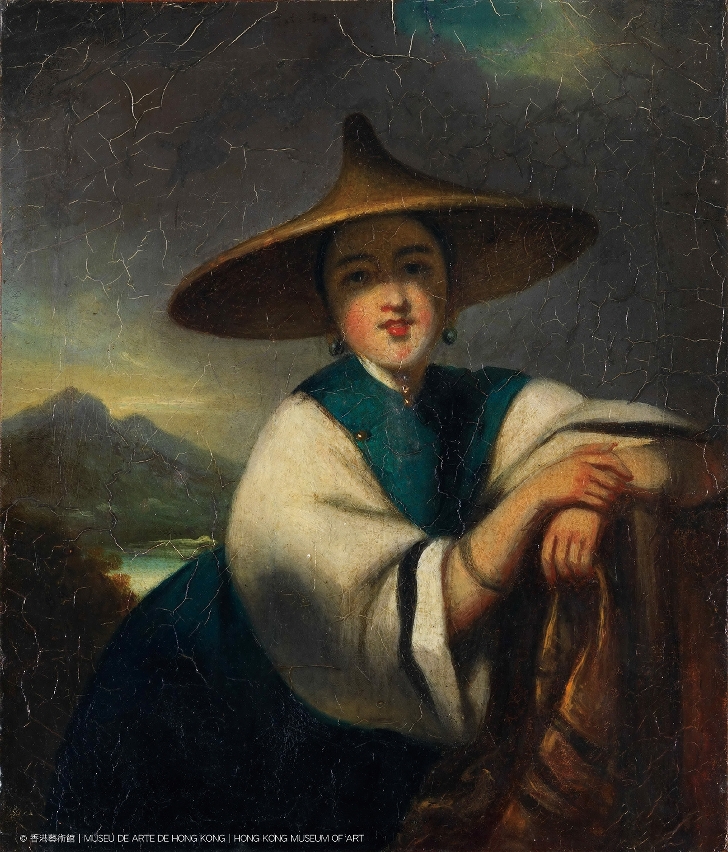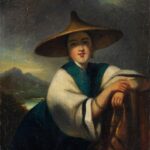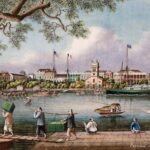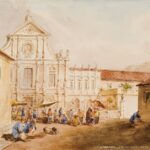 A Chinese Sampan Girl / George Chinnery (1774–1852) / Oil on canvas / c.1852 / Collection of Hong Kong Museum of Art
A Chinese Sampan Girl / George Chinnery (1774–1852) / Oil on canvas / c.1852 / Collection of Hong Kong Museum of Art
Under the patronage of the Department of Culture and Tourism of Guangdong Province and the Cultural Affairs Bureau (IC) of the Macao SAR Government and organised by the Macao Museum of Art (MAM) of IC and the Guangdong Museum (Guangzhou Luxun Museum), with the support of the Hong Kong Museum of Art under the Leisure and Cultural Services Department of the Hong Kong SAR Government, the large-scale exhibition “Focus: Integration of Art between China and the West in the 18th-19th Centuries” will be inaugurated on Friday (10 May), at 6:30pm, on the 4th floor of MAM. Through three different perspectives—painting styles, painting skills and painting materials, the exhibition fully showcases the visual dialogue and integration between China and the West, brought about by Chinese and foreign artists in the Pearl River Delta area during the 18th and 19th centuries. The exhibition is a programme integrated in the 34th Macao Arts Festival, and is open to the public.
This exhibition is the largest historical and export painting exhibition ever held in Macao, featuring over 300 pieces/sets of selected export paintings from the Guangdong Museum, Hong Kong Museum of Art, MAM and Macao Museum, aiming to present a full account of the origin and development of export paintings and to highlight the inclusive and exploratory spirit of Guangdong, Hong Kong and Macao artists over the course of trade globalization two centuries ago. As this year marks the 250th anniversary of George Chinnery’s birth, the exhibition features a significantly high number of artworks by this artist, so closely related to Macao, and his followers, including a number of valuable paintings displayed in the city for the very first time. This provides a comprehensive reflection on Chinnery’s significant influence in South China in the 19th century while also highlighting Macao’s role as the window to the encounter between Chinese and Western cultures. The exhibition encompasses various themes, such as plants, ships, landscapes, portraits and genre painting, with a view to interpreting the dialogue between Chinese and Western painting skills, and displaying various Chinese and Western means of artistic expression, including oil, watercolour, gouache, sketch and printmaking, offering a panoramic view of the integration and adaptation of Chinese and Western painting materials.
In conjunction with the exhibition, guided tours in Cantonese will be available for the public at 3pm on Saturdays, Sundays and public holidays from 18 May. Various outreach activities will also be launched during the exhibition period, including special guided tours, a lecture series, workshops and concerts, as well as the art tours “Strolling the Streets of Macao in Chinnery’s Paintings” and “Strolling in the Macao Museum of Art”, themed around Chinnery’s traces in Macao. The diverse activities offer interpretations of Chinnery’s painting styles and export paintings in the 18th-19th centuries from multiple perspectives. For details and registration methods, please stay tuned to the updates on the MAM website.
The exhibition will be on held on the 4th and 3rd floors of MAM until 11 August and 15 September respectively. MAM is open from 10am to 7pm (no admission after 6:30pm) including on public holidays, and is closed on Mondays. Admission is free.
For more information, please visit the MAM website at www.MAM.gov.mo or the “Macao Museum of Art” page on Facebook.




